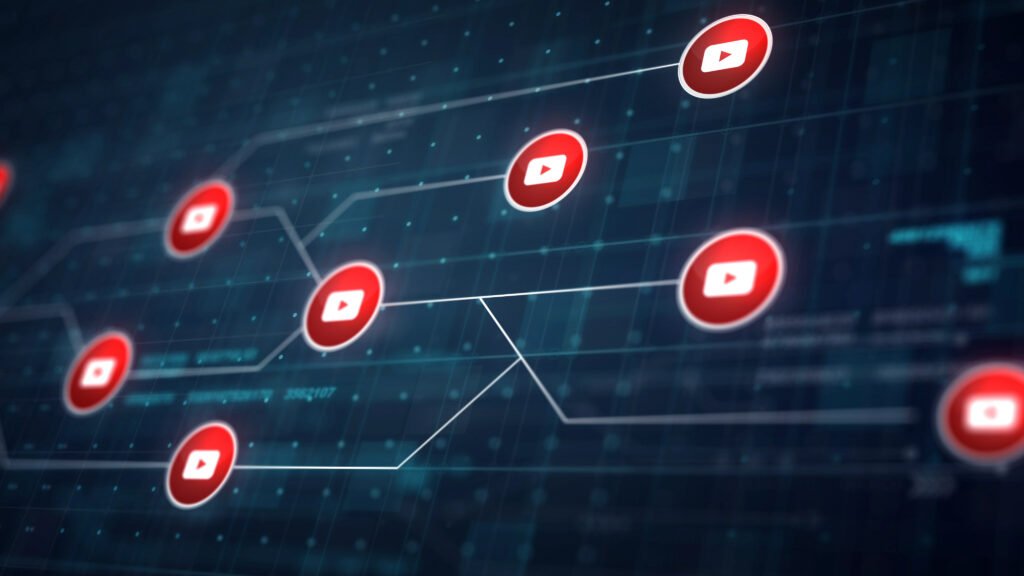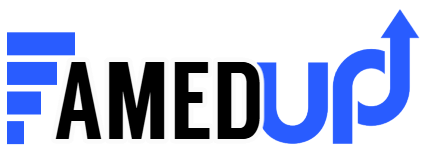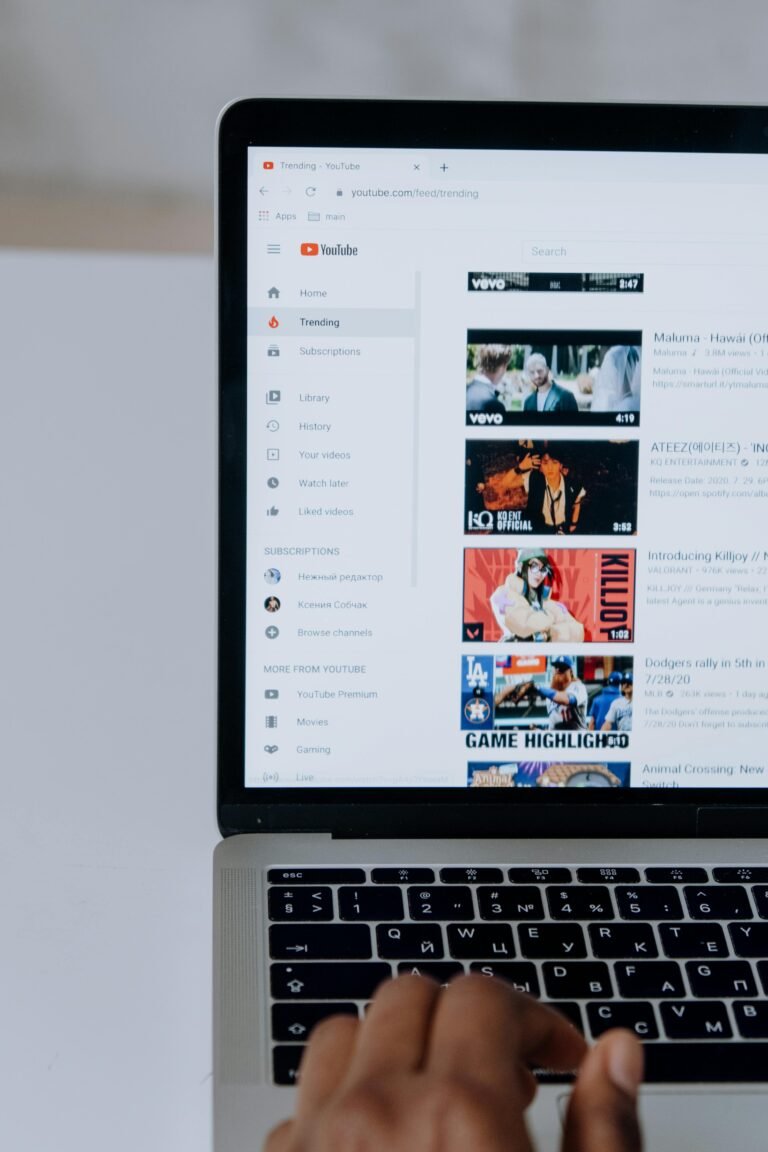1. What’s Driving the AI Boom on YouTube?
🔹 The Rise of Automation in Content Creation
With millions of videos uploaded daily, creators are under pressure to produce high-quality content quickly. This is where AI & YouTube intersect powerfully. AI tools automate repetitive tasks like video editing, scriptwriting, and even voiceovers—giving creators more time to focus on creativity and strategy.
🔹 Leveling the Playing Field
AI technology is making professional-grade tools available to everyday YouTubers. You no longer need a big budget or production team to create engaging videos. With tools like ChatGPT, Pictory, and Lumen5, creators can generate full videos—from concept to post-production—faster and more affordably than ever before.

🔹 Data-Driven Decisions
Another major driver of the AI boom on YouTube is the ability to analyze massive amounts of data. AI can track viewer habits, predict trends, and recommend the best time to post or what topics are likely to go viral. This analytical edge is helping creators fine-tune their strategies for growth.
Why AI is Changing the Content Game
🔹 From Assistant to Co-Creator
AI isn’t just a behind-the-scenes tool anymore—it’s becoming an active collaborator. For many, AI & YouTube go hand in hand when it comes to content ideation. Creators use AI to brainstorm video topics, generate headlines, and even write scripts in a specific tone or style.
🔹 Personalized Content at Scale
One of AI’s greatest advantages is its ability to personalize content for different audiences. YouTubers can now tailor their videos to various viewer segments using AI-powered editing and recommendation tools. This level of customization is boosting engagement and watch time.
🔹 Smarter Optimization, Faster Growth
SEO on YouTube is no longer guesswork. AI tools analyze keywords, suggest optimal tags, and track video performance. This makes it easier for creators to tweak their content in real-time, improving visibility and increasing chances of going viral.
2. AI Tools Revolutionizing YouTube Creation
🔹 Scriptwriting Made Easy: Let AI Write the Story
Gone are the days of staring at a blank screen. With the power of AI & YouTube tools like ChatGPT and Jasper, creators can now generate full video scripts in seconds. These tools can write in specific tones—funny, professional, dramatic—and tailor content to any niche. Whether you’re doing commentary, how-to tutorials, or storytelling, AI can provide a solid script foundation that saves hours of writing time.
🔹 AI Voiceovers: Speak Without Speaking
Text-to-speech (TTS) tools have drastically improved in recent years. Platforms like ElevenLabs, Murf.ai, and Descript offer realistic, human-like voiceovers. Creators who don’t want to speak on camera or lack professional recording gear can still produce polished, voice-narrated content using AI. This shift is especially useful for faceless channels, making AI & YouTube a winning combo for privacy-conscious or introverted creators.
🔹 Editing on Autopilot: Smarter, Faster, Sharper
AI video editors such as Pictory, Runway ML, and Wisecut allow creators to automatically cut, trim, add subtitles, and enhance audio—without traditional editing skills. These tools even detect filler words or long pauses and remove them automatically, creating a seamless viewer experience. With AI, post-production is no longer a bottleneck.
🔹 Thumbnails That Click: AI-Driven Design Tools
Thumbnails can make or break a video. AI-powered design tools like Canva’s Magic Design and Thumbnail AI use machine learning to analyze what gets the most clicks. They help you create eye-catching visuals that align with current trends and viewer preferences. By combining design data with creativity, AI & YouTube help creators improve click-through rates and grow their channels faster.
🔹 Analytics and SEO: AI as Your Marketing Assistant
Understanding YouTube’s algorithm is tough—but AI simplifies it. Tools like TubeBuddy and vidIQ use machine learning to suggest the best keywords, titles, and hashtags based on current trends. They also provide performance tracking, helping creators pivot and improve over time. This smart optimization is key to going viral on a crowded platform.
3. AI-Generated Content: Hype or Future?
As AI tools become more advanced, an important question arises: Are we entering a golden age of automation on YouTube, or is it all just overhyped noise? Let’s explore how AI & YouTube are shaping the next wave of content—and the conversations they’re sparking.
🔹 Fully AI-Created Channels: The New Frontier
Some creators are experimenting with fully AI-generated YouTube channels—where AI writes the script, generates the voiceover, edits the video, and even creates the thumbnail. Channels in niches like motivation, storytelling, and tech explainers are thriving without a human ever appearing on camera. This model is appealing for scalability, speed, and anonymity.
But is it sustainable? That’s still up for debate.
🔹 Deepfakes and Virtual Influencers: The Blurred Line
With the rise of deepfake technology and AI avatars, the line between real and artificial is getting thinner. Virtual influencers powered by AI are now hosting channels, reviewing products, and building fan bases. For viewers, it’s getting harder to tell if they’re watching a real person—or an AI-generated persona.
While it opens up creative possibilities, it also raises concerns about authenticity and trust. The use of AI avatars may be innovative, but it forces creators and audiences alike to reconsider what “real” means on YouTube.
🔹 Ethics and Authenticity: Should Viewers Be Told?
Transparency is becoming a hot topic in the AI & YouTube discussion. Should creators disclose when their content is made by or with AI? While YouTube currently has no strict policies requiring it, audiences are starting to expect honesty. Viewers want to know if they’re watching a genuine human story or a polished machine-generated script.
For creators, the challenge is balancing efficiency with ethical responsibility. The future of AI-generated content depends on how open and responsible creators are with its use.
4. How Creators Are Using AI to Go Viral
Going viral on YouTube isn’t just about luck—it’s about strategy, timing, and consistency. With the rise of intelligent tools, AI & YouTube are forming a powerful alliance that’s helping creators break through the noise. Here’s how creators are using AI to boost visibility and increase their chances of going viral.
🔹 Trend Prediction: Catching the Wave Before It Breaks
AI tools are now capable of analyzing massive amounts of viewer data to predict what topics are about to trend. Platforms like vidIQ and TubeBuddy use real-time analytics to suggest trending keywords and content ideas. By aligning with what audiences are already searching for, creators can ride the algorithmic wave to greater reach and engagement.
This predictive ability makes AI & YouTube a powerful combo for staying ahead of the curve.
🔹 AI-Optimized Titles, Tags, and Descriptions
Crafting the perfect title or thumbnail isn’t just creative—it’s scientific. AI tools now assist in writing click-worthy titles, finding SEO-rich keywords, and even analyzing the emotional pull of your thumbnail. Some platforms test multiple versions of metadata to see which ones perform best. This optimization boosts click-through rates and helps your content rank higher in search and recommendations.
🔹 Real-Time Feedback for Performance Tuning
Gone are the days of “post and pray.” With AI-driven analytics, creators can monitor video performance in real-time and make adjustments instantly. If a video is underperforming, AI tools can suggest changing the title, updating the thumbnail, or even reposting at a better time.
This kind of intelligent feedback loop allows for fast iteration—key to finding what works and scaling it quickly.
🔹 Personalized Engagement Strategies
AI helps creators better understand their audience’s behavior, demographics, and preferences. This data can be used to create content that speaks directly to specific viewer segments. For example, AI can identify which parts of your video are most engaging, allowing you to replicate that success in future uploads.
In short, AI & YouTube are enabling creators to tailor their content like never before—leading to deeper engagement and faster growth.
5. Case Studies: Viral Success Stories with AI
Theory is helpful—but real-world examples show just how powerful the relationship between AI & YouTube has become. These case studies highlight creators who used AI tools not just to improve their workflow, but to achieve massive success.
🔹 Channel X: From 1K to 1M Subscribers Using AI Voiceovers
A faceless storytelling channel—let’s call it Channel X—went from complete obscurity to over 1 million subscribers in less than a year. How? By using AI for every part of the content pipeline.
- Scripts were generated using ChatGPT.
- Voiceovers came from ElevenLabs’ lifelike text-to-speech.
- Editing was handled by Pictory, with automated subtitle and cut features.
- Thumbnails were created using AI design tools.
The result? A scalable system where 3–5 high-quality videos could be published weekly—feeding the YouTube algorithm and growing the channel rapidly.
🔹 Creator Y: How Automated Editing Changed the Game
Creator Y, who runs a tech review channel, struggled with time-consuming editing—until switching to Runway ML and Descript. These AI-powered platforms automatically removed filler words, synced captions, and even suggested clips for social media.
By saving hours per week, Creator Y began uploading more consistently and with higher production quality—leading to a 300% increase in monthly views within three months. In this case, AI & YouTube allowed for consistency without burnout.
🔹 Niche Channels Winning with Data-Driven AI
In niche communities—like finance, productivity, or crypto—AI is giving small creators a serious edge. One personal finance channel used vidIQ’s keyword research tools to target underserved topics with high search volume. Combined with ChatGPT for scripting and Canva AI for visuals, the creator quickly gained authority in a competitive space.
By understanding exactly what their audience was looking for—and using AI to meet that demand—this creator saw a 10x increase in subscribers in under six months.
6. Challenges & Controversies
While the relationship between AI & YouTube offers exciting possibilities, it’s not without complications. As more creators lean into automation and AI-driven workflows, new challenges—technical, ethical, and legal—are emerging. Let’s take a closer look.
🔹 Copyright Concerns: Who Owns AI-Generated Content?
One of the biggest debates around AI-generated videos is ownership. If an AI tool writes your script, narrates it, and edits the video—who actually owns the final product? Some AI platforms retain partial rights to generated content, while others grant full commercial usage.
This legal gray area is especially risky for monetized YouTube channels. If you’re not careful about the tools you use and their terms, your video could be flagged—or worse, demonetized. As AI & YouTube evolve together, creators must stay updated on copyright policies and tool licensing agreements.
🔹 Platform Policies: YouTube’s View on AI Content
YouTube currently allows AI-generated content, but that may change. As deepfakes and misinformation become more common, the platform is under pressure to introduce stricter guidelines. For instance, YouTube has already taken steps to require labeling of altered or synthetic media, especially when it involves real people.
Creators using AI-generated avatars, voice clones, or manipulated visuals may need to disclose this clearly in the near future—or risk penalties. Staying compliant with YouTube’s evolving rules will be crucial as the integration of AI & YouTube becomes more sophisticated.
🔹 Human vs Machine: The Creativity Debate
AI can write a good script, but can it tell a great story? Some argue that the emotional nuance, lived experience, and cultural context of human creativity can’t be replicated by algorithms. Over-reliance on AI may lead to formulaic, soulless content that lacks originality.
For creators, this raises an important question: Should AI replace the creative process—or support it? The most successful channels seem to find a balance, using AI to handle repetitive tasks while preserving the human touch in storytelling and delivery.
🔹 Viewer Trust and Authenticity
Audiences value authenticity—and some viewers are uncomfortable with AI-generated personas or auto-narrated videos. If viewers feel misled or disconnected, it can hurt engagement and credibility. That’s why transparency is key.
To maintain trust, creators using AI should consider being upfront about it. Making your workflow part of your brand—e.g., “100% AI-generated channel”—can actually attract curious viewers and build a niche audience.
7. The Future of AI on YouTube
As AI technology continues to advance at a rapid pace, the partnership between AI & YouTube is set to deepen—and reshape the platform in exciting ways. Here’s a look at what the future might hold for creators and viewers alike.
🔹 Will AI Replace Creators or Empower Them?
A common fear is that AI will replace human creators altogether. However, the future looks more like collaboration than competition. AI is likely to serve as a powerful assistant that helps creators scale their efforts, improve quality, and experiment with new formats. Rather than replacing creativity, AI tools will augment it—freeing creators to focus on what they do best: connecting with audiences.
🔹 The Rise of Hybrid Creators
We’re likely to see a new breed of “hybrid creators” who blend human intuition with AI precision. These creators will use AI for everything from content ideation and production to distribution and audience analysis. Their advantage? Speed, efficiency, and the ability to tailor content like never before.
🔹 AI-Driven Personalized Viewing Experiences
On the viewer side, AI will make YouTube an even more personalized experience. Smarter algorithms will recommend videos not just based on past views, but on mood, context, and deeper behavioral patterns. Creators can expect to reach highly targeted niche audiences, increasing engagement and loyalty.
🔹 Ethical and Regulatory Developments
As AI-generated content becomes mainstream, expect platforms like YouTube and regulators worldwide to introduce clearer guidelines and transparency requirements. These changes will aim to protect creators, viewers, and advertisers from misuse and misinformation while encouraging innovation.
🔹 Predictions for the Next 5 Years
- Increased integration of AI in video creation tools, making complex effects and edits accessible to all.
- Wider adoption of AI-generated avatars and virtual hosts.
- More robust tools for combating deepfakes and malicious AI use.
- Greater emphasis on creator-AI collaboration for unique, engaging content.
8. Conclusion
The fusion of AI & YouTube is transforming the way content is created, optimized, and consumed. From automating tedious tasks to unlocking new creative possibilities, AI is empowering creators to reach wider audiences and achieve viral success faster than ever before.
However, this evolution also comes with important challenges—ethical considerations, copyright questions, and the need for transparency. The future of YouTube will belong to those who embrace AI as a powerful tool while preserving the uniquely human touch that makes content truly resonate.
For creators ready to dive in, now is the perfect time to explore AI tools, experiment boldly, and find the balance between innovation and authenticity. The possibilities are limitless, and the next viral sensation could be just one AI-powered video away.
Read Also: From 0 to 100K: The Ultimate Blueprint for YouTube Success


